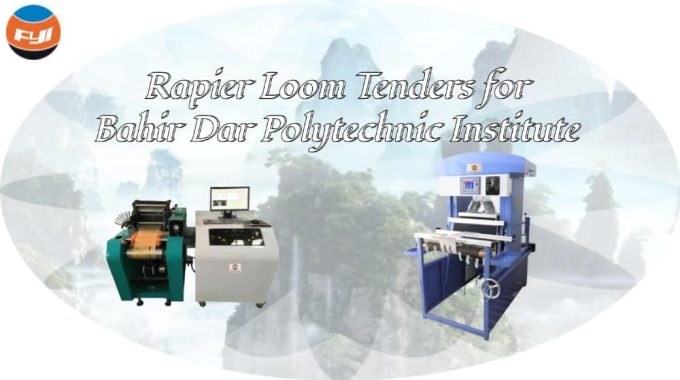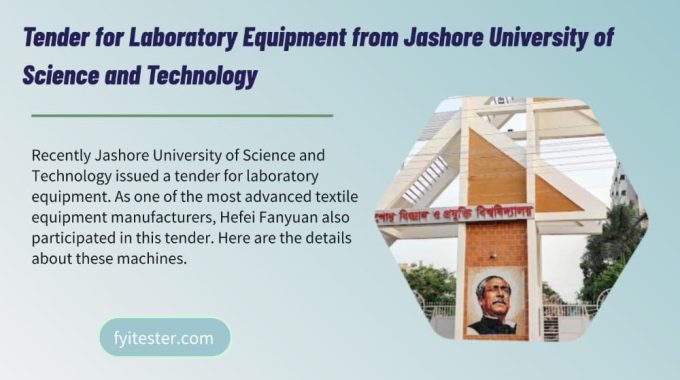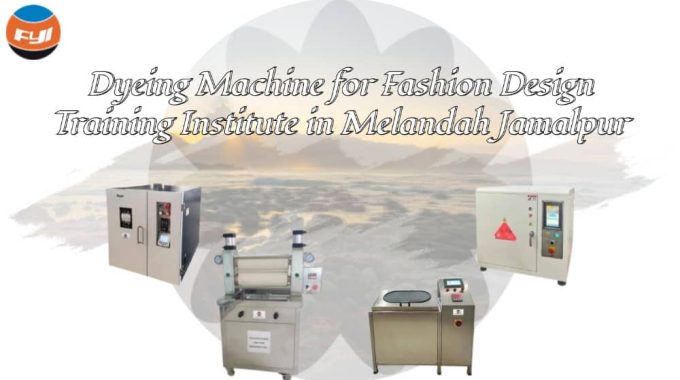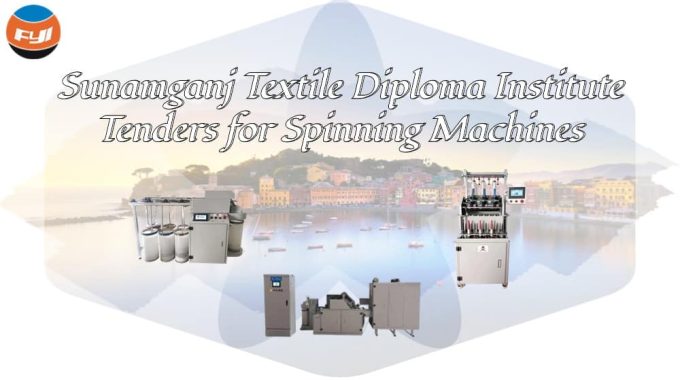
Rapier Loom Tenders for Bahir Dar Polytechnic Institute
Contents
Tenderer
The Bahir Dar Polytechnic Institute, which has now evolved into Technology and Textile Institutes, was founded in 1963 via technical collaboration between the Government of the Soviet Union and the Imperial Government of Ethiopia. The institute was a prominent producer of technicians for the nation. The institute began its first training program in Textile Technology at the advanced diploma level in conjunction with the Russian Government under the name Bahir Dar Polytechnic Institute, which later became Bahir Dar University in 2000. For almost 33 years, the training program was at the Advanced Diploma level in the subject of textile technology. The Advanced Diploma program was then elevated to a B.Sc. degree in Textile Engineering in 1997.
Request for the bids
- Subject of Procurement: Procurement of Textile Machines
- Procurement Reference Number: ICB 376/2015
- Project Name Procurement of Textile Machines for Bahir Dar University Institute of Textile and Fashion Technology
- Date of Issue of Bidding :November,2022
- The bid opening shall take place at:
Date: March /31/2023
Time: 10:30 AM (4:30 Local Time)
- The deadline for bid submission is:
Date: March /31/2023
Time: 10:00 AM (4:00 Local Time)
There are two rapier looms in this tender. The requirements are as follows. For more information, please contact us.
Projectile loom with tappet shedding
Major Technical specification
1.1. Fabric specification
Fabric width: 320cm
Fabric product type:
Width reduction range:
Range of warp yarn count: course to fine and ply yarn
Range of weft yarn count: course to fine and ply yarn
Type of yarn used: all types
Weft density range:
Warp density range:
Range of fabric density: (Light to heavyweight) in gsm: up to 900
1.2. Filling insertion
Projectile type and Dimension
Weft stop motion
Weft cutter
Projectile guide
Transporting Device
Weft feed mechanism
Pre-winder type and mechanism
Weft selector:
Number of Projectile
Picking Mechanism
Maximum Number of weft colour:4
1.3. Shedding
Shedding mechanism: Tappet
Number Harness Frame:6
Pick finding Mechanism
Range of shed heigh
1.4 Warp let-off
Backrest type and mechanism
Warp stop motion mechanism
Type of drop wire
Number of warps stop bars
Flange diameter of warp beam
End finding mechanism: Electrical type and automatic
1.5. Beating-Up mechanism
Beating mechanisms
Beating force
Reed Type
Reed width: Shall be compatible with given fabric width
Reed count: to be specified on pending technical specification
1.6. Cloth take-up
Cloth tack-up roller (diameter, position, surface roughness),
Cloth roll (diameter, position, and capacity, coat (emery))
1.7. Machine drive
Type of motors used for driving
Loom drive
Braking system
Reed motion
Shedding motion
Picking motion
Let-off motion: Electronically controlled
Take –up motion: Electronically controlled
Lubrication mechanism
selvedge formation: Tucked selvedge in both sides
Beam for false selvedge
Temple type:
Suitability for machine start-up
Speed Adjustments
Selvedge cutter
Other driving mechanism
1.8. Machine frame
Rigidity and durability of machine frames
Materials used and treatments for each component of machine
1.9. Loom control, monitoring and software tools
Interactive display (Equipped with user friendly and informative screen color display system with fault indication menu and displaying production and quality reports per shift, per operator etc)
Loom monitoring system
Microprocessor speeds, memory capacity and circuit board setup for digitalized components
Features leading for Visibility of the machine status
Software tools (for manage machine setting, creating new designs, style administration, etc)
Connection provided for major weaving room monitoring systems
Bi-directional communication on Ethernet or serial connection
Others features if any
1.10. Production capacity
Effective speed, rpm:470
Weft insertion rate (m/min)
Production in m2/hr per m/c
Loom efficiency
1.11. List of accessories, tools and spare parts
All necessary spare parts that could serve for at least two years and components/accessories shall be comprehensively identified and included in the bid, and all the items to be supplied shall be of the highest quality.
Technical Advantage (Features)
2.1. Utility Consumption
Power Consumption (installed and absorbed)
2.2. Features:
Features leading to Lowest energy consumption; Features leading to productivity increase; Lowest weft yarn waste; Quick warp style change; Features leading to product quality improvement; Features leading to mechanical and operational reliability and ease of use; Features leading to Ease of Maintenance; Features regarding international regulation; Concerning safety (mechanical and electric); Environment (ergonomics, noise, vibrations, and electromagnetic compatibility); Long machine service life; Features leading to decreased spare part consumption; Could have a minimum noise and vibration
Man power requirement
Year of Manufacture: New
3. Machine Dimension ( LxWxH )
4. Country of origin: Preferably Europe and similar origin
5.Quality and performance guarantee
Stated achievable quality levels; Stated performance guarantee; Experience and reliability in the supply of machinery related to the project.; Bidder’s market share and experience in world market (Asia, America, Africa, and Europe etc) as regard to the particular machines being offered; Specific & relevant experience in supplying of these particular machines in this lot to Ethiopia; Specific & relevant experience in supplying of these particular machines in this lot to developing; After Sales Service; video technical support, online support & reliability of spare parts supply; Execution of schedule, detailed with machine manufacturing, readying for shipment, erection,
6. Scope of Training and methodology
No of trainees (operator, technicians,
Duration of training (in Man-days)
Place of training (abroad and in house)
7. Availability of machines documentation:
The bidder shall present machines and spare parts catalogues and express his/her commitment to present all the necessary machineries’ documents such as: operational and maintenance manuals, etc.)
8. Gross & net weight; & number of containers required during transportation of the lot
Gross and net weight of machine/equipment
Total number of containers required during
Electronic jacquard Loom with Rapier weft insertion
Major Technical specification of rapier loom
1.1. Fabric specification
Fabric width: 320cm
Fabric product type: Terry Fabric
Width reduction range:
Range of warp yarn count: course to fine (with possibility of ply yarn)
Range of weft yarn count: course to fine (with possibility of ply yarn)
Type of yarn used: all types
Weft density range:
Warp density range:
Range of fabric density that can be produced (Light to heavy) in gsm
Pile height:
Pile formation mechanism
Pile loop direction: warp direction
Range of Pile Ratio
Range of pile geometry
Pile presence on fabric surface
1.2. Filling insertion
Rapier type: Flexible double rapier
Warp tension control mechanism (For Ground and Pile)
Weft stop motion
Weft cutter
Weft selector
Weft color: 8
Pre-winder type and mechanism
Sprocket type
1.3. Shedding
Shedding mechanism: Electronic jacquard
Number of Hooks and tire cord
Comber board
Type of Reversing
Range shed height
1.4. Warp let-off
Backrest type and mechanism
Warp stop motion
Type of drop wire
Number of warp stop bars
Warp tension control
Flange diameter of warp beam (Ground and Pile)
End finding mechanism: Electrical type and automatic
1.5. Beating-Up mechanism
Beating mechanisms
Beating force
Reed Type
Reed width: Compatible with the given fabric width
Reed count
1.6. Cloth take-up
Cloth take-up roller (diameter and position)
Cloth roll (diameter, position, and capacity)
1.7. Machine drive
Loom drive
Type of motors used for driving
Braking system
Reed motion
Shedding motion
Picking motion
Drive for pile formation
Drive of hook
Jacquard motion
Suitability for machine start-up
Let-off motion: Electronically controlled
Take –up motion: Electronically controlled
Speed Adjustments
Lubrication mechanism
selvedge formation: Tuck-in selvedge
Beam for false selvedge
Selvedge cutter
Temple type:
Other driving mechanism
1.8. Machine frame
Rigidity and durability of machine frames
Materials used and treatments for each component of machine
1.9. Loom control, monitoring and software tools
Interactive display (Equipped with user friendly and informative screen color display system with fault indication menu and displaying production and quality reports per shift, per operator etc)
Loom monitoring system
Microprocessor speeds, memory capacity and circuit board setup for digitalized components
Features leading for Visibility of the machine status
Software tools (for manage machine setting, creating new designs, style administration, etc)
Connection provided for major weaving room monitoring systems
Bi-directional communication on Ethernet or serial connection
Others features if any
1.10. Production capacity
Effective speed, rpm: 600
Weft insertion rate (m/min)
Production in m2/hr per m/c
Loom efficiency
1.11. List of accessories, tools and spare parts
All necessary spare parts that could serve for at least two years and components/accessories shall be comprehensively identified and included in the bid, and all the items to be supplied shall be of the highest quality.
Technical Advantage
2.1. Utility Consumption
Power Consumption (installed and absorbed in kW/hour/machine
2.2. Features
Features leading to Lowest energy consumption; Design Flexibility; Features leading to productivity increase; Lowest weft yarn waste; Quick warp style change; High speed hook selection; Interfaced with CAD system; Features leading to product quality improvement; Features leading to mechanical and operational reliability and ease of use; Features leading to Ease of Maintenance; Features regarding international regulation; Concerning safety (mechanical and electric); Environment (ergonomics, noise, vibrations, and; Long machine service life; Features leading to decreased spare part consumption
Man power requirement
Simple way to adjust knife height and shed size system
Year of Manufacture: New
Could have a minimum noise and vibration
Multi-position adjustable CAM selvage mechanisms
3. Machine Dimension (LxWxH)
4. Country of origin: Preferably Europe and similar origin
5. Quality and performance guarantee standards:
Stated achievable quality levels; Stated performance guarantee; Experience and reliability in the supply of machinery related to; Bidder’s market share and experience in world market (Asia, America, Africa, and Europe etc) as regard to the particular; Specific & relevant experience in supplying of these particular machines in this lot to Ethiopia; Specific & relevant experience in supplying of these particular machines in this lot to developing countries; After warranty: video technical support, online support, spare parts, field maintenance; After Sales Service; video technical support, online support & reliability of spare parts supply; Execution of schedule, detailed with machine manufacturing, readying for shipment, erection, commissioning and training.
6. Scope of Training and methodology
No of trainees (operator, technicians, technologists, Engineers)
Duration of training (in Man-days).
Place of training (abroad and in house).
7. Availability of machines documentation:
The bidder shall present machines and spare parts catalogues and express his/her commitment to present all the necessary machineries’ documents such as: operational and maintenance manuals, etc.)
8. Gross & net weight; & number of containers required during transportation of the lot.
Gross and net weight of machine/equipment.
Total number of containers required during transportation of.


